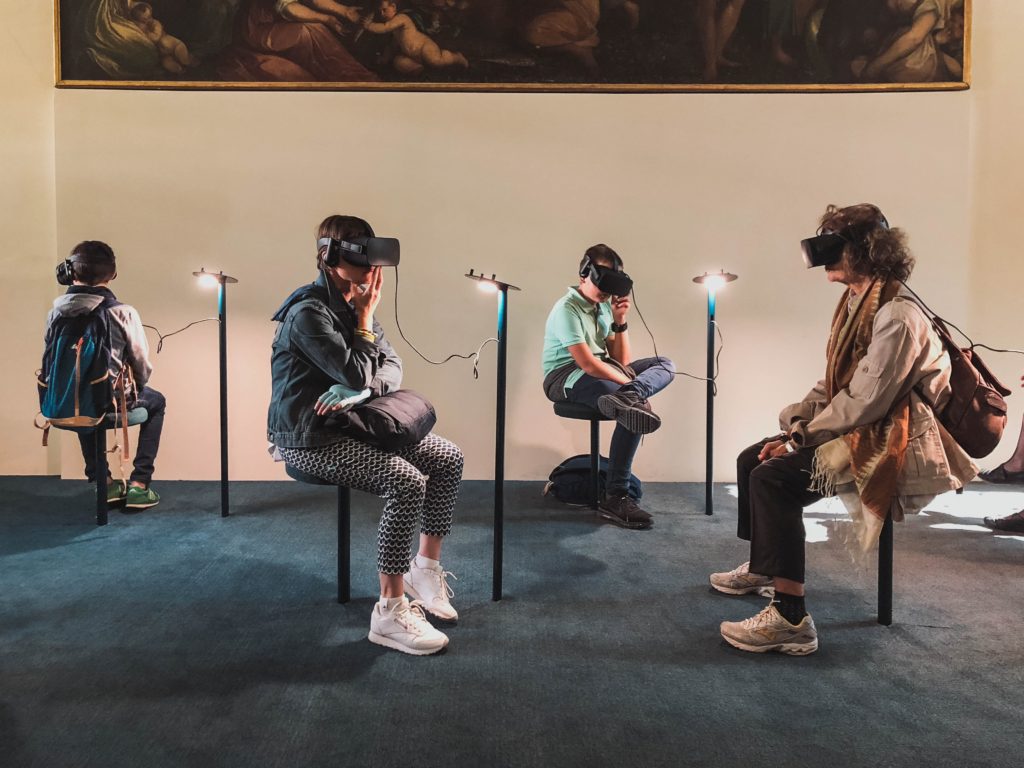5 Best Online Tools for Working Remotely 2020

If you work in the creative space, chances you already know that developers, designers and digital marketers enjoy working from home. Thankfully, there are companies out there who now feel comfortable allowing their employees work remotely. According to a recent research, remote employees tend to be more productive and engaged, than regular office employees. Not to mention the tremendous cost savings for the company. Hence hiring self-motivated and professional employees with strong communication skills and can work independently is important. Especially in recruiting tech-savvy team members with an understanding of the importance of collaboration. READ: TOP 10 SITES FOR WORKING REMOTELY Truth is, working remotely is often a team sport. From brainstorming, to critiques, delegating to other team members and collaborating in real-time. This is something that can’t be done without the aid of technology. With this in mind, we are sharing some online collaboration tools. Here’s what we came up with: Slack When it comes to effective team communication, slack takes the medal! Slack is one of the popular tools for remote workers. Companies like Buffer, Zapier and the other remote-first companies utilizes Slack as their virtual office. A place where team members can get instant feedback and concise communication, both one-on-one and in team groups. One outstanding feature is the ability to install apps, that automatically alert business activity, such as new email subscribers or product reviews and bots that can engage employees. Zoom Talking about the best video conferencing tool ever! If you’ve worked remotely at any point in your career, you probably have a memory of using an unreliable video conferencing tool for one or two meetings. We all know how frustrating technical glitches can be, like frozen video and low sound. Some of the things remote workers faced recently as one year ago. Thankfully, Zoom is a world away from all that, which explains the company’s rapid growth from 30,000 users in 2014 to 700,000 users in 2017—an increase of 2233% over just 3 years. Trello With a lot of project management tools out there to choose from, it was quite hard to pick one. Trello’s style, simplicity and performance is outstanding to us. By understanding what needs to get done and simulating feedback from the entire team, Trello helps remote teams increase their productivity by up to 75%. Trello’s simplicity makes it extremely flexible, resulting in hundreds of unique ways to utilize the software. Dashlane For every remote working team, securing your passwords as well as other vital information is very important. And that is why Dashlane is the #1 password manager. However, team collaboration requires sharing access to same tools and for those that still store their password on a manual spreadsheet, it is no longer safe. Which is why password managers like Dashlane are your go to source. Similarly, not only do they keep you safe, but they also make it really easy for team members to log in conveniently into essential tools. Zapier Modern companies ought to have a workflow automation software. Remote teams definitely have a stronger need for the functionality. Relying on heavy technology to communicate to work effectively. Most remote teams are geographically dispersed, increasing the importance of up-to-date documentation. This up-to-date documentation would include ongoing projects to carry everyone along. By connecting your favorite apps together and moving data between them automatically, Zapier helps facilitate a strong remote work culture.
Difference Between Augmented Reality and Artificial Intelligence

When you hear AR and AI, what do you think they are? AR and AI are two tech words that are raving up the design space. Businesses, as well as consumers are spending a lot of money on new, exciting and trendy technologies, for example; smart watches. Very soon, designers won’t have a choice but to learn how to design AR and AI apps to stay ahead of the ever revolving curve. Truth is, there is very little information about AR and AI because the technologies are still in its early stages. Sometimes, it can be quite scary to learn new things, so first, let’s understand the basic meaning of the following: AR: Augmented Reality AI: Artificial Intelligence This isn’t a case of AR vs AI. These terms are independent technologies in their own right and space. So, let’s start with augmented reality (AR). Augmented Reality (AR) Just for proper understanding (We believe explaining AR in technical terms may not help everybody, so we’d focus on the basics), we would explain AR with an example – Snapchat. Sure, Snapchat is a social media app very popular among the younger generation. But did you know that it’s also an AR application? Those creative-face filters showcase AR at work. So what better example? Brands can incorporate Snapchat marketing and AR into their digital strategy by investing in branded filters. Find out more about how to use Snapchat and other digital tools to promote your business. Do you know what works best for Augmented reality? It is when the user doesn’t have to learn a new trick. Take advantage of recent technology the user already knows how to use, that is, device camera, maps, etc). In conclusion, we recommend that you download and use AR apps, like Google Translate – the more you get conversant with AR as a user, the easier it would be to design them. Further Reading TOP 10 Best Augmented Reality Apps for 2020 AR meets AI 6 Ways Augmented Reality is Changing UX How AR and AI are changing E-commerce & Customer Experience Artificial Intelligence (AI) Artificial intelligence is a whole different ball game. While AR involves interacting with the real world in a different way, AI is about systems learning how to solve problems that users have been struggling to solve themselves. It’s all about machines learning things. Imagine selecting your favorite Spotify artist, and Spotify is using this information to select what you enjoy listening to, which would obviously be faster when you’re looking to discover new music. Definitely intelligence speaking! Artificial intelligence can be really creepy sometimes. Anybody who has ever asked Spotify, in their head of course, “Hey, how did you know I wanted to listen to that song?” will understand this. Further Reading Artificial Intelligence 101 7 Impacts of Artificial The Intelligence Technology What Makes a Great UX of AI? 9 Powerful Examples of AI in use today Conclusion UX designers need to know about these technologies if they want to stay ahead of the game. Not that we have mastered the fundamentals of UX, but these concepts are really not new and we all should start getting familiar with what users need at the moment. Augmented reality and Artificial Intelligence wearables are the top dogs now, and designers need to quickly learn how to ride their asses completely!
Brand Communications Strategist, Sophie Mokah, Talks About the Impact of Social Media in Canadas Fashion Industry

We recently caught up with the super smart Sophie Mokah, Brand Communications and Fashion Enthusiast. She is the Chief Creative Officer of Pinq Communications a Brand Communications and Creative Agency. She is a fashion connoisseur and a lover of all things creative. A Christian, a wife and a mom of two children. She is currently living with intention and navigating being a business owner and motherhood all at once. TFA: Please tell us a little bit about yourself SM: My name is Sophie Mokah, I am a Brand Communications Expert and a Fashionista. In 2019 I founded Pinq Communications a Brand Communications and Creative Agency. My agency has different sides to it, it touches every creative part of Marketing – Ibrand.ca. I have always loved creative arts as a little girl, I grew up with fashion, arts and music. My mom has always been my biggest fashion inspiration. She ran her own fashion and creative agency too, and that inspired me a lot. Three years ago, I stumbled on digital marketing while working as a Creative Director for a Fashion Company. I immediately fit into it, it was like I found the missing piece of the puzzle, and it was easier to merge both knowledge and experience to create masterpieces for my clients. One of my goals in life is to change lives and transform brands using people focused strategies that genuinely help people and solve everyday problems. This would make me happy. I am a happily married mom of two gorgeous children. I am family oriented but also an advocate for self-care – I mean you have to be mentally strong to care for your family. So a little me time is highly recommended. TFA: How do you describe your personal style? Who would you say are your inspirations? SM: I am an all fashion, trendy and chic kind of girl. My fashion is a mix of variety ranging from casual to semi-formal, formal, old school, luxurious, girly, sporty and clean- cut professional. I can wear it all, it all depends on the event, place and time. I love to accessorize a lot to compliment my outfits, I use belts, scarves, hats and jewelries. Most times I seem a bit over dressed at functions but I also love being conspicuous so I do not mind the attention Lol. My mom is my biggest fashion inspiration. Everything I know now about fashion, I learnt from her. I watched her dress up, we played dress up, I watched her design things and I just fell in love. I currently do not have any other fashion inspiration but I pick a little from everyone. I love to watch runway shows, because that tells you the latest trends and what to look out for the coming year. TFA: How is the fashion industry in Canada? Does social media and tech have a huge impact in the industry? SM: Before I moved to Canada, a friend that grew up here told me that once I get to Canada my fashion sense would evaporate Lol. It was funny at that time and I didn’t believe her, but now I see the reasons why. First of all, Canada is 100% different from Nigeria where I grew up. It is one of the coldest countries in the world. Sometimes fashion literally goes out the window when you are only thinking about staying warm, layering up and not getting the flu. It is hard to keep up with fashion here, but doing it with intention is the only way to keep up. When I first moved here, I started researching Canadian fashion. I found out that three provinces Toronto, Montreal and Vancouver are like the fashion hubs of Canada. So I figured I just moved to a non-fashion hub. I started attending fashion shows (there are like two fashion shows in Calgary where I live) to have a feel of what fashion looks like here and it sort of informed my own creativity. I would say the fashion industry is improving in Canada. Social media and tech has really upped the fashion game in Canada. Social media is merging the fashion world and designers are springing up in Canada every day. The Canadian Arts and Fashion Awards is a huge impact on the industry. It is putting Canadian fashion on the map and it has nurtured the love for fashion in more young people. Retailing aspect is still a bit dicey, because shopping for fashion is really expensive in Canada, so brands find it hard to make profit. I figured it has to do with taxing goods being imported into Canada (a little bit high), but yeah once that is sorted, fashion will make a huge impact to the Canadian economy. TFA: What are your favorite social media apps for lifestyle and fashion contents? SM: Instagram and Pinterest are two of my favorite social media apps when it comes to fashion and lifestyle content. They both cover every bit of fashion and lifestyle content either in motion or still pictures. These two social media platforms have been evolving and changing with the times. You can literally search for anything on Instagram and it gives you a sort of direct connection to your favorite brands. They carry you on a journey from sketching to actual finished designs which we didn’t have years back. I also like this new app called Like to Know It – it is a fashion app that links Instagram photos to an app that links the shopping website so you can directly shop any outfit in real time. TFA: What would be the notable trend for fashion in 2020? SM: Old school is coming back with a bang. I know we saw a little bit of old school in 2019 but it is coming in with a bang this year. I mean just look back at the last fashion shows in 2019, you sort of have an idea where the trend is heading. We
REVEALED: 5 Digital Marketing Trends for Your Business in 2020

We have watched the rise of internet users over the past decade, Google playing a huge role across major continents of the world to connect millions to the internet for the first time. While you may find yourself in a position to maintain the pace of digital revolution, there is a lot to suggest an optimistic outlook for your business in 2020, but this will depend increasingly on your willingness to adapt and compete with industry players, innovators and tech leaders. Below are 5 digital marketing trends you should watch out for in 2020: User Generated Content: While you may be aware that this isn’t new, user-generated content is transforming everything from reviews to information research and discovery. Amateur created content is massive, real and will continue to grow not only in size but also in importance across online platforms and content type. Everyone has an opinion and wants it to be heard! Review sites will also become more important in the marketer’s armory. Many businesses would leverage on UGC to drive brand perception. Mobile Apps to replace website: With smartphone rapidly in use, more companies will take heed and employ mobile enterprise applications to effectively mobilize their sales force. Mobile apps will allow many companies manage resources such as inventory and their supply chain using mobile phones, either through SMS or Web-enabled applications. The steady increase in the number of mobile users will continue to fuel this trend. ALSO READ: How to boost conversion rate of your website. Increase in Vlogging: The ever-rising of vloggers and the popularity of video content sharing has changed the dynamics of consumer/brand interaction online. According to a recent survey, over 75% of users on social media say that they are likely to patronize a business if they promote video contents. Sites like YouTube have introduced innovative ways that people can watch and share video content. Facebook has already released the concept of video images for profiles, and many people are already using video as a profile instead of a picture. The Rise of TikTok: A new contender has entered the arena, most especially for young people, that contender is TikTok. A social media app that allows users to post short lip-synced, music, talent or comedy skits. In 2019, TikTok hit 524 million active users worldwide, while in China, it hit over 150 million daily users and counting – a strong platform for social media marketing. To leverage on this trend, business would now have TikTok accounts to target the right millennial audience with funny and exciting short video contents. Focus on AI in Marketing: In 2020, a lot of emphasis would be placed on the implementation of Artificial Intelligence to promote business. For example, the existence of voice search will greatly increase relevance in the online development of search. Online services will now create voice query analysis and rework their content to reflect this development. This would impact user experience when it comes to google searching as voice makes it more easy to communicate what a user is searching for. ALSO READ: Four reason why digital marketing matters

